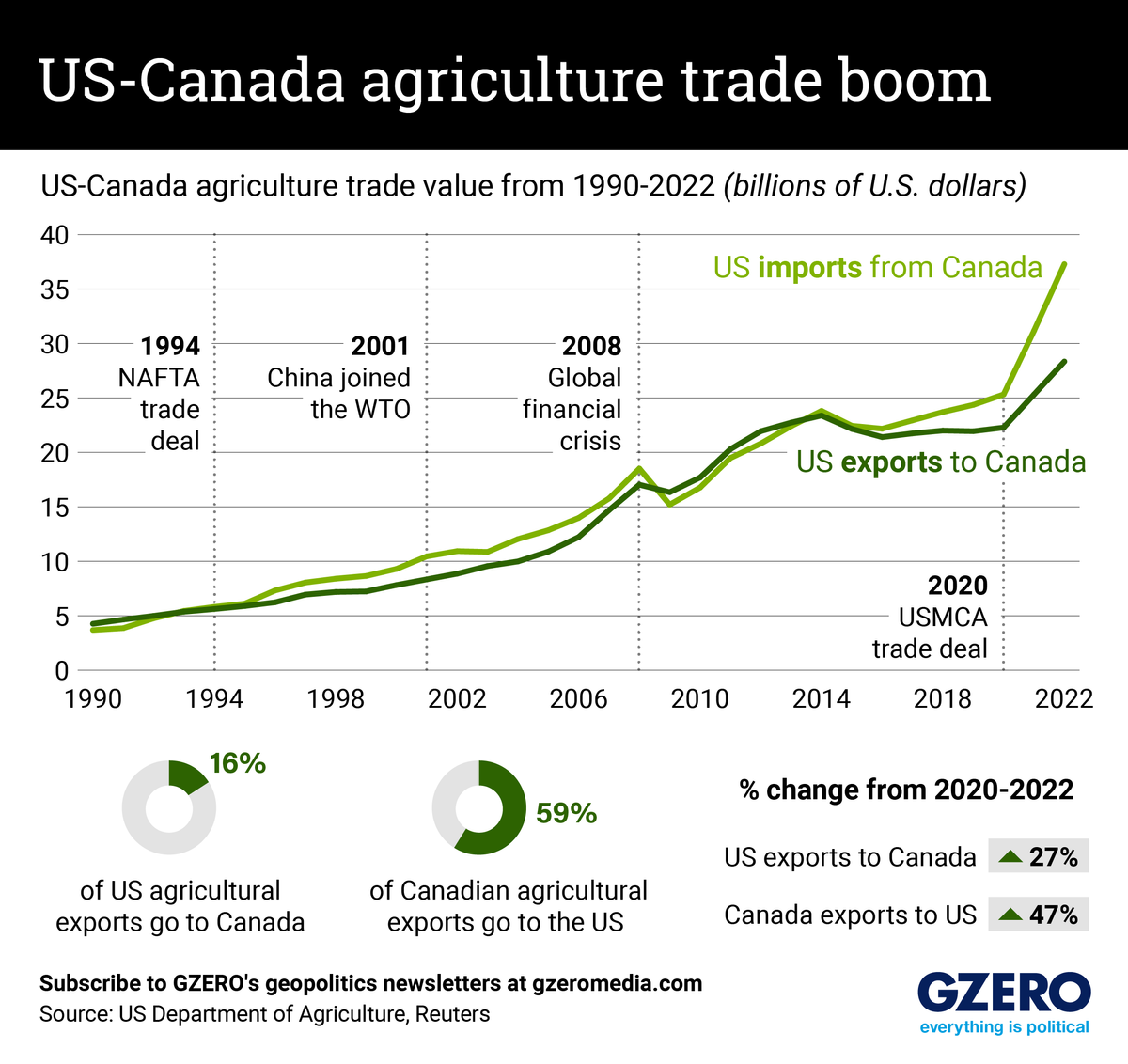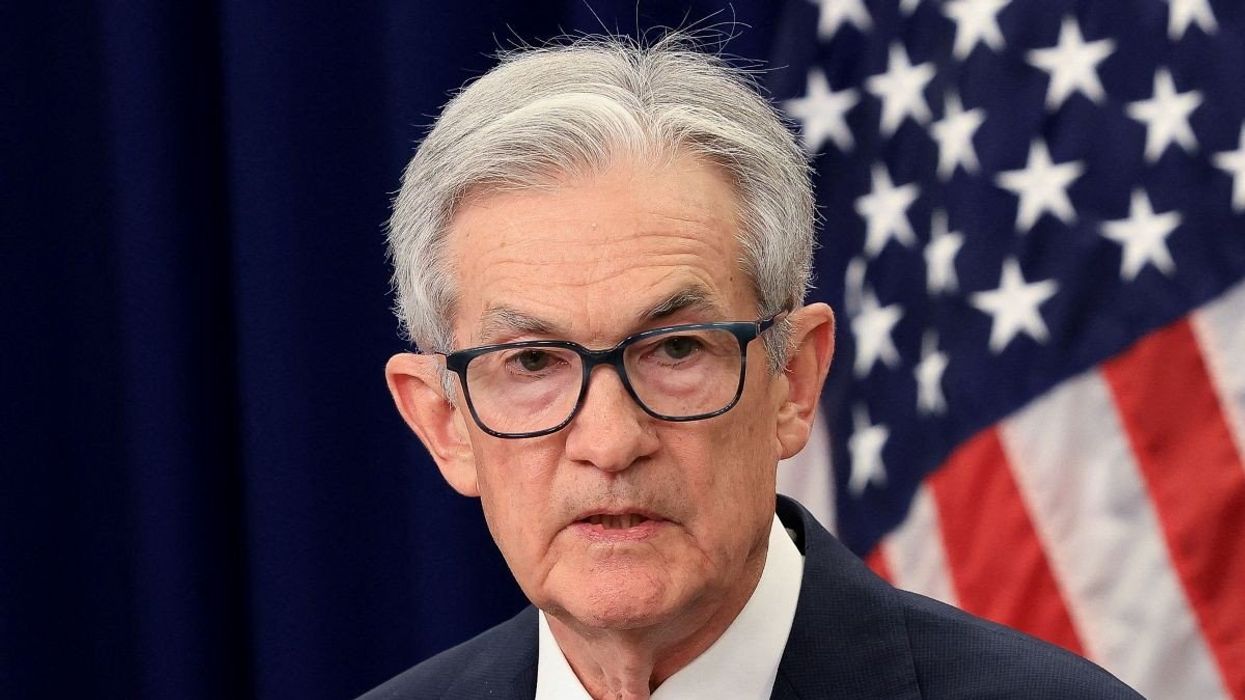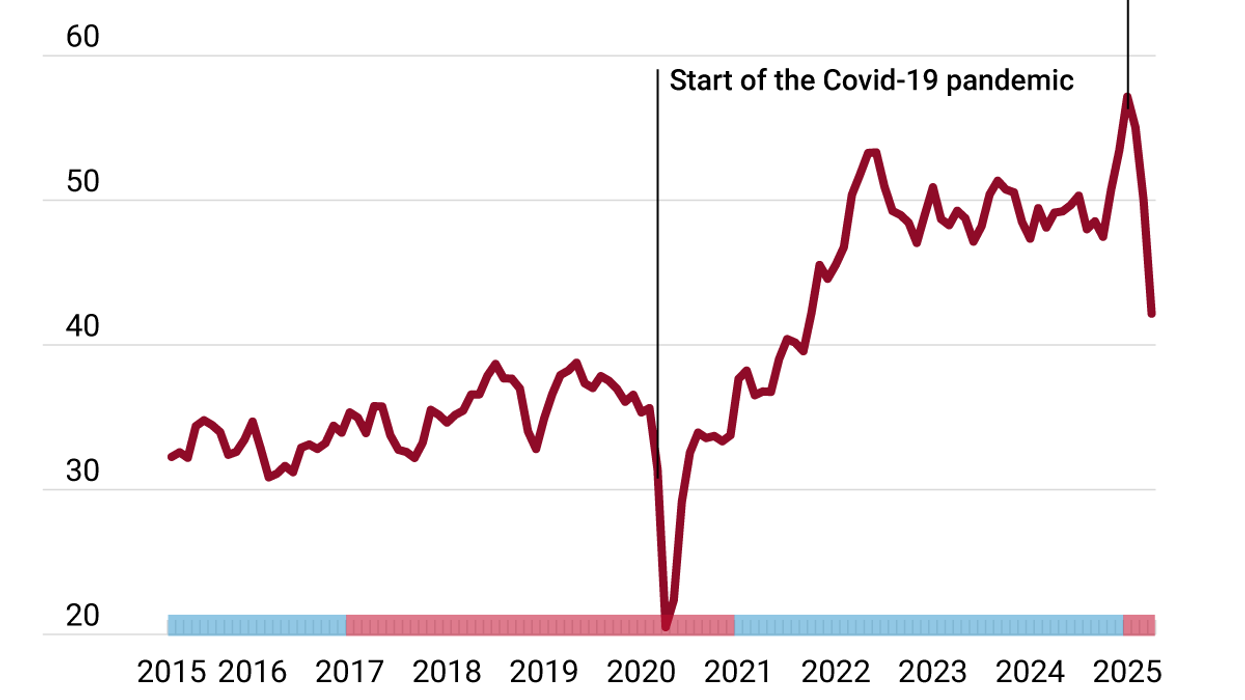The US and Canada, whose trade relationship topped $1.2 trillion in 2022, have long been at loggerheads over one key sector: agriculture. Indeed, both countries have accused the other of putting in place protectionist policies that undermine the spirit of free trade.
This all came to a head in 2018, when then-President Donald Trump played hardball over the renegotiation of a US-Canada-Mexico trade agreement, citing Ottawa’s role – dating back to the 1960s – in stabilizing agricultural prices at home. And Trump isn’t the only one with protectionist proclivities: President Joe Biden has kept many of his predecessor’s trade policies intact.
Despite claims that broad free trade agreements have hurt their respective farming sectors, bilateral agri-trade has in fact boomed over the past few decades due to the eradication of trade barriers. We take a look at US-Canada agriculture trade since 1990.


















